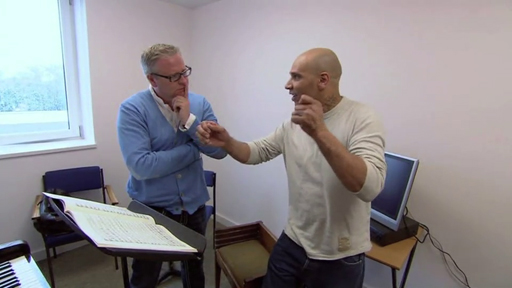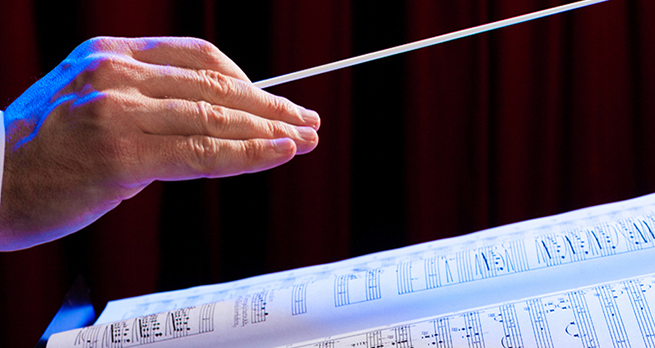1.1.4 The ear-eye connection
You may not have had any experience in reading music and may never have seen an orchestral score. In the following video, which is extracted from a television series that challenged celebrities to try and conduct an orchestra, you will see Goldie, who does not read music, encounter an orchestral score. After you have watched it, think about what processes Goldie went through to understand how the score worked.

Transcript
On reflecting about the video of Goldie, we hope you noticed the importance of how the visual element, the dots and lines of the score, is a representation of sound. Connecting what you see with what you hear is fundamental to understanding scores, and especially orchestral scores. Goldie achieved this connection of eye and ear by using what was familiar to him – drum ‘n’ bass sounds and rhythms – and equating them to the blocks of orchestral sound in Grieg’s piece In the Hall of the Mountain King.
We hope that you will find ways of making these connections too as you work through this course, so keep thinking about the ear-eye connections – what you hear and what you see as a representation of that sound.
You’ll be looking more closely at how conductors use scores in Week 4.
